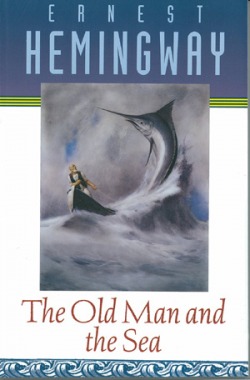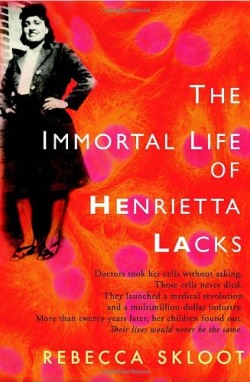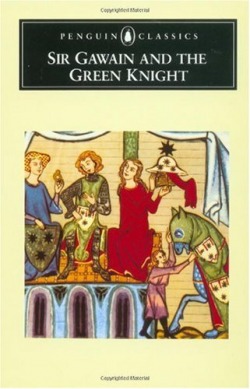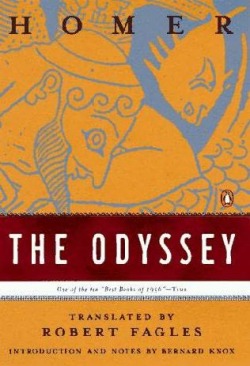Literature

This book was written by Ernest Hemingway in 1952. This story takes place in only five days as the old man, Santiago, has an adventure with the sea. Manolin, Santiago's apprentice and young helper, tries to give this poor man a better lifestyle. He isn't allowed to go with Santiago on this trip because his parents think that Santiago is Salao, 'worst form of unlucky”. Alone, Santiago goes out beyond the limits others have gone to catch the marlin. He uses all of his strength to hold on, but sharks end up eating everything except for its head. During this trip Joe DiMaggio, a former Yankee with a bone spur, becomes his inspiration. Legacy is an important theme in this story. The old man doesn't want to return home without catching the fish because he wants to be remembered as a hero. Even though Santiago comes back to shore with the fish almost gone,he does realise that sometimes the legacy you leave might not be a physical prize, but the effort you made to achieve that goal.

This book deals with many issues relating to our topic. One thing is the relationships from different generations. In the beginning, Siddhartha chooses to leave his family in order to peruse his spiritual journey. Even though his father doesn’t agree, he lets Siddhartha go. In the later parts of the book, Siddhartha faces the same struggle with his own son. He must learn to let his child make his own decisions and live independently. Another way this relates to legacy is because it shows how each individual human theoretically comes together to make a whole planet. This is shown by the “Om” in the river that Siddhartha hears. All the different voices of people come together to make the one southing “Om”.

Henrietta was a poor, southern tobacco farmer. She had severe cervical cancer and her cells would reproduce at an extremely quick rate. So, without her knowledge or consent, doctors took her cells and they have been living on immortally, without Henrietta. Her cells are used, called HeLa, to make many vaccines and find cures to cancers and diseases. They are put in “mass production” and are used to launch companies that sell human biological materials and help form vaccines. They have grown approx. 50 million tons of HeLa. Henrietta’s family was not informed of this, however, until twenty years after her death. She still remains unknown. Her family never got any of the profits, living without health insurance. This questions the fairness of scientists taking and using Henrietta’s cells, and it is linked to racism because she was African American living in a time when our country was very segregated

Sir Gawain and the Green Knight is a story about Sir Gawain, a knight of King Arthur's Round Table, and the Green Knight. The Green Knight challenged Sir Gawain to a contest that if he chopped off the 'head, the Knight could chop off his one year later. Thinking that the Knight would surely be dead if his head was off, Gawain took the deal. After his head came off, the Green Knight unexpectedly picked up his head and walked away as he reminded Gawain of the deal. Later on in the year, Sir Gawain started his journey to meet the Knight. He stopped at this castle on his way. The Lord of the castle, Bertilak, invites Gawain in to tell his story. Bertilak proposes a bargain to Gawain that Bertilak will give him what he catches and Sir Gawain must give him whatever he gains at the castle. The first day the lord's wife tries to suduce Gawain, but only manages to get a kiss. That is what he gives to Bertilak in return. The next day he recieves two kisses and gives it to the lord. The third day, he recieves three kisses and a silk girdle that she said will give him luck. He doesn't tell the lord about this girdle and leaves the next morning. Before traveling the final distance to meet the knight, the person that helped him find his way told Gawain that he woludn't tell anyone if he just ran away instead of meeting the Green Knight. Gawain decided to contiune on instead. When he got there, the Green swong teice at him,but doesn't hit him. The third time, the knight sofley hits him casuing a small scar on his neck. The Green Knight then reveals that he is the lord and only gave him the scar because he was honest with his wife. The scar was for not telling him about the girdle. Gawain returns to his home as a hero,but wears the girdle as a sign of his failures. Sir Gawain will always be remembered as a hero and honest man. When he could have fled into the woods instead of meeting the Green Knight, he showed courage that most people wouldn't have. The legacy he left on the people in the castle was so strong that the Green Knight had no choice but to keep him alive. During this period in medieval times, it was even more important to have good chivalry. That way you can have a legacy of being a good person when you are gone.

Th1rteen R3asons Why by Jay Asher relates to our topic Legacy. This books goes through the reasons why the main character, Hanna Baker, committed suicide, yet it accomplishes it in a very clever way. The book is told in the point of view of Clay Jensen. He, along with others, receives tapes from Hanna, which explains why she killed herself. If you have received the tapes, then you have played a role in her decision to kill herself, and you have the responsibility to pass the tapes onto the next person on her list. So through Clay listening to the tapes, you “hear” Hanna’s voice, “experience” her stories, and “feel” her pain. These tapes are Hanna's last mark that she leaves behind for the world. On her last tape Hanna explains that she will be mailing these tapes the day before she dies. It is chilling because, in her words, “I’ll go to school… and we’ll have one last day together, the only difference being I’ll know it’s the last day, and you won’t. And you’ll treat me how you’ve always treated me. Do you remember the last thing you said to me?...and what was the last thing I said to you?...because I knew it was the last thing I’d ever say.” Another reason why this book relates to the topic of Legacy is because of the “snowball affect”. A lot of the people who received these tapes, and a lot of the things she endures are just littler things that all build up and have a negative impact on her in the long run. One thing leads to another, which leads to another until her life is off course. For example, she had her first kiss with this boy she liked, but he, along with others, started rumors and lies about it, that it was more than just a kiss. This gave her the reputation of being “easy”. This led her to be put on a, “Best A**” list made by some of the boys in her school. This then caused another girl to pick a fight with Hanna because she was jealous of Hanna’s attention from the boys. The fight left her with a scar on her face that reminded her of her reputation and all the lies that spurred from one event. This shows that every action has a greater affect so you must be careful with everything you do and say. As Hanna says in her tapes (in regards to the scar the girl left on her face), “…And the rest of you…did you notice the scars you left behind? No probably not, because most of them can’t be seen with the naked eye.”

This year in 10P, we read the classic “children’s” novel, The Little Prince. This book connects to our topic of Legacy. In The Little Prince, knowledge and wisdom are passed from different generations (…and species), but the interesting thing is in this book, it is exchanged from child to adult and animal to human. The Little Prince teaches the Pilot many things on how to live your life in the mindset of a child: live life to the fullest; don’t keep rushing through life; and don’t worry about material things like money or power. From the fox, the little prince learns lessons of love and friendship. He learns to appreciate the empirical things in life, like his love, the rose. He learns that his love is unique and special. He also learns, to quote the fox, “One sees clearly only with the heart. Anything essential is invisible to the eyes.” This book shows how we all impact each other and how everyone has a different thing they can offer us. This is extremely true with the Little Prince’s affect on the Pilot. When the Little Prince “goes back to his planet” (open for interpretation), the Pilot notices the lasting impact the Little Prince had on him; he frequently wonders the fate of the Little Prince and the rose and sheep. In the end, the Pilot asks all who come back to the desert and see this landscape to look for the Little Prince, and look closely because he is there, physically and spiritually.

The Odyssey is an ancient classic that describes the tale of a shipwrecked war hero named Odysseus. After winning the Trojan War, Odysseus was set out on a journey back to his homeland of Ithaka. Unfortunately, he faced countless misfortunes along the way after infuriating the temperamental gods of Mount Olympus. The epic discusses in significant detail many morals and life lessons, most of which can be applied to legacy. Specifically, there is one scene in which Odysseus takes a trip to the Underworld, where he converses with Achilles, a famed war hero with an illustrious career. Here, we learn that Achilles would rather be a slave to the most horrid of masters than to have a prestigious position as ruler of all of the dead. This engenders the important debate of immortality versus mortality, and we realize that Achilles believes that living even in the worst conditions is better than dying and being remembered for heroics. If one attains a legacy that one is not pleased with, similarly to the way that Achilles’ life ends up (he would rather be living than dead as a war hero), is it fair to deserve such a legacy? Unfortunately, one can’t possibly have control over this. Sometimes, no matter how much the person is willing to change for the better (or worse, for that matter), actions that they committed previously will always define them.
Poems
After the Flood We by Margaret Atwood
This poem is about after life for the two survivors after a major flood. As we interpreted it in class, the first survivor remembers the past and remembers life because he gathered the drowned bones of the mothers. The second survivor is oblivious or refuses to acknowledge the flood and the past. This survivor then creates a new human population, at random without much care. They come to life slowly with, “brutal faces coming out of stone.” This careless breading suggests that the new humans do not know about their past and therefore, did not learn from past mistakes. So they really aren’t new humans at all, are they? Atwood may be talking to us; we haven’t learned from our mistakes since Noah’s time. It is important to recognize what precedes us so we can improve life and not repeat our bad actions, which led us to “the flood” in the first place.
“Narcissus Lullaby” – Tony Hoagland
This haunting poem discusses the worry that many humans harbor regarding what happens after we are gone. The speaker discusses his/her desire for someone to think about him/her every once in a while after he/she passes on to help relieve her fear that she will one day be forgotten. In fact, this poem seems to suggest that if one is to be forgotten from all physical memories, that person no longer exists. This can be viewed as truth to a certain extent, as the only thing keeping us (or at least our memory) “alive” after we die is the collection of people left behind on earth. If there isn’t anyone left who remembers us or thinks about us, we, in essence, do not exist.
Various religions have attempted to make some sense of this theory and even find a solution to it. In Judaism, there is a certain prayer called the “Mourner’s Kaddish.” The books of prayer used in Synagogue explain that this specific prayer is to be said not only for the deceased that we are personally mourning, but also for those who do not have anyone to say Kaddish for them. It is a very moving practice that reassures everyone that they will be remembered forever; therefore they can never truly “disappear” from this Earth.
Various religions have attempted to make some sense of this theory and even find a solution to it. In Judaism, there is a certain prayer called the “Mourner’s Kaddish.” The books of prayer used in Synagogue explain that this specific prayer is to be said not only for the deceased that we are personally mourning, but also for those who do not have anyone to say Kaddish for them. It is a very moving practice that reassures everyone that they will be remembered forever; therefore they can never truly “disappear” from this Earth.
